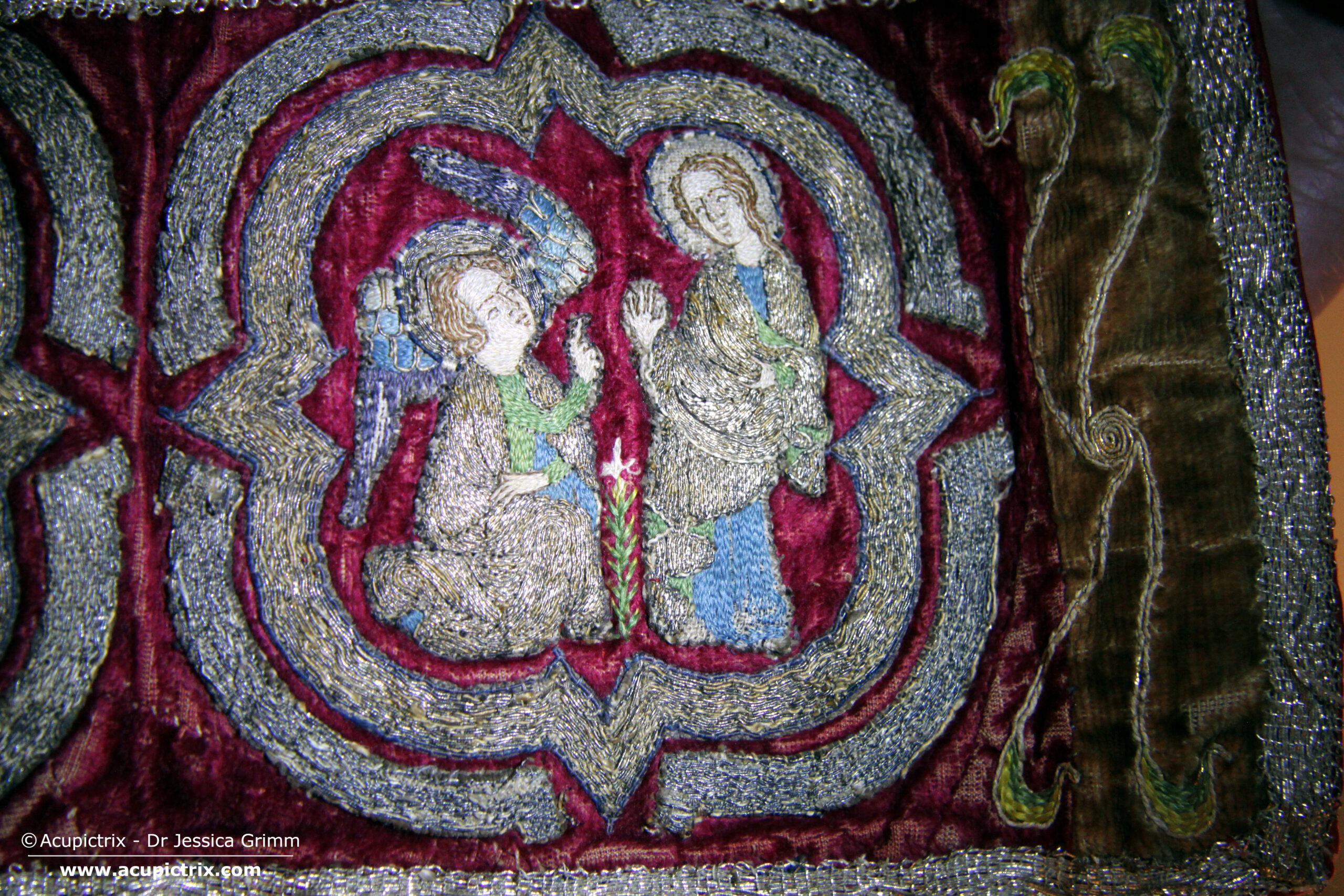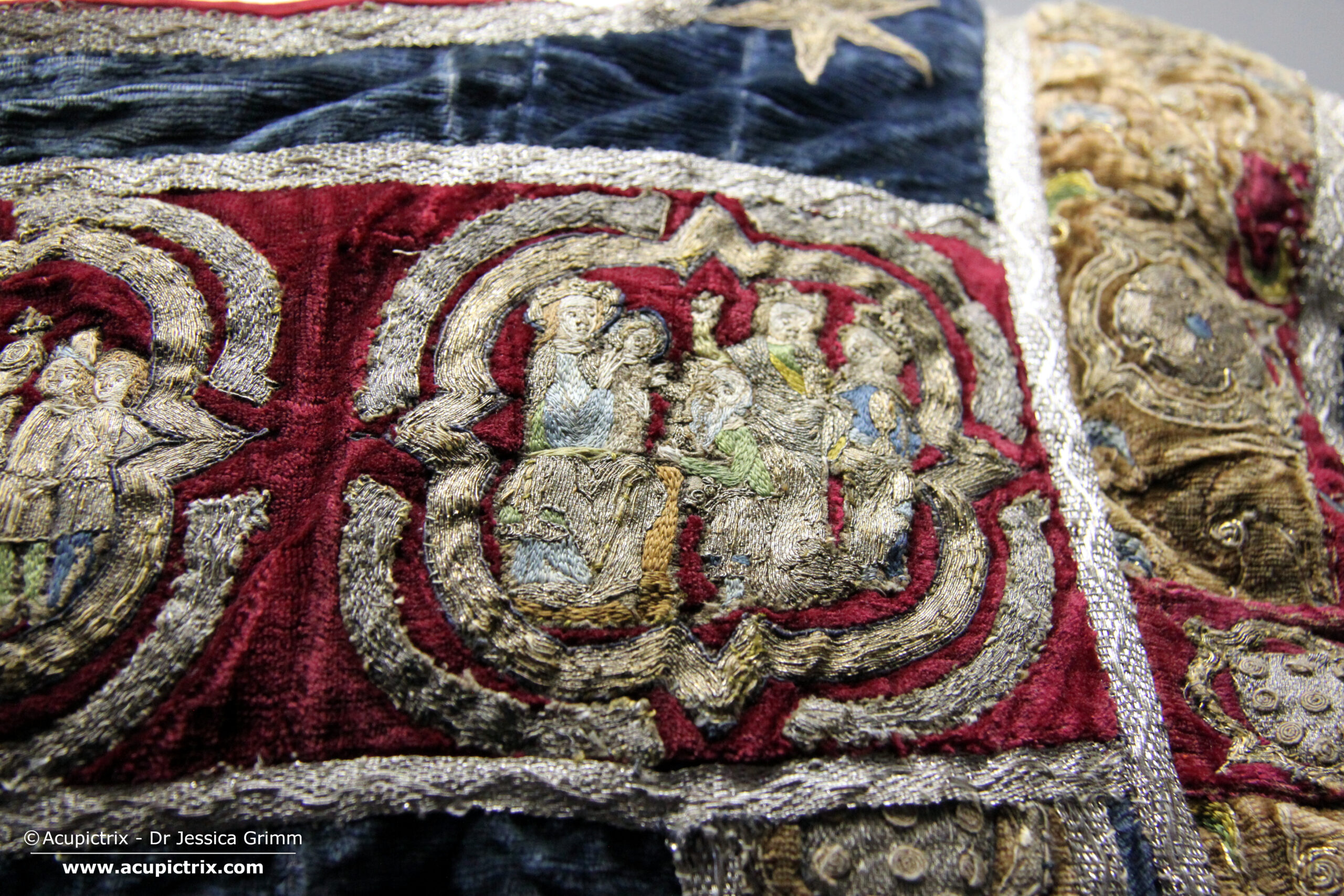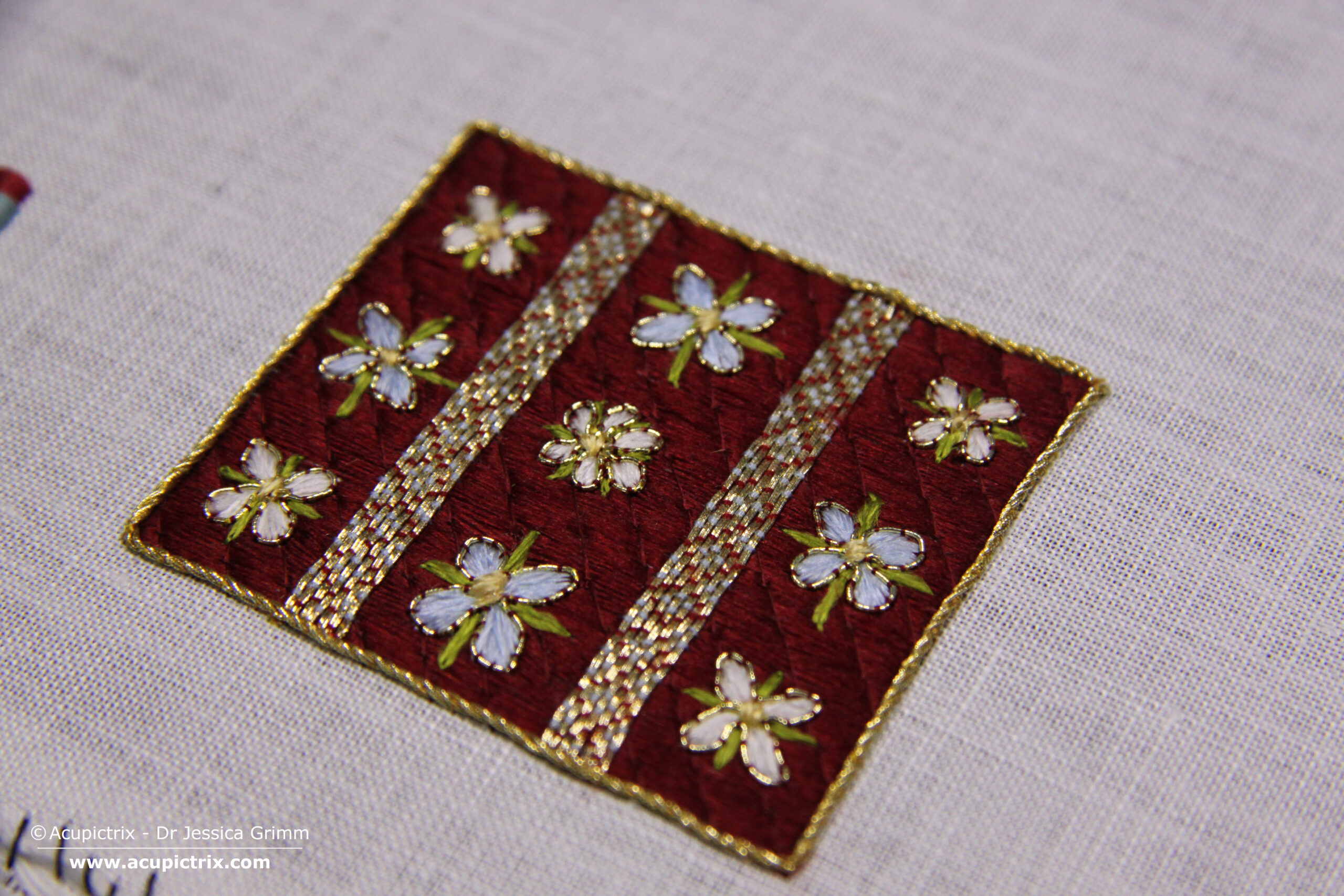When we looked at the embroidered chasuble from Fritzlar with the Virgo inter Virgines iconography last week, I was sure I would find many Doppelgängers. I had seen this iconography many times before, and I was pretty sure that these pieces were all very similar. Nope. They are not. As soon as you look at these pieces in more detail, you will find they are all different. Either in the placement of the individual figures and/or in the embroidery techniques used. Now what does this mean? On the one hand, these pieces are readily recognisable as a group, and on the other hand, they are all different. This, I think, must mean there was a late medieval model book in use by embroiderers in Central Europe. As no medieval model books used by embroiderers seem to have survived, reconstructing one using actual medieval goldwork embroidery is pretty exciting.


Here you see two typical embroidered chasuble crosses showing the Virgo inter Virgines from the late 15th century. The left chasuble was made in Austria in the second half of the 15th century and is kept at the Hungarian Museum of Applied Arts. The piece on the right, was part of the private collection of the Bernheimer family. It was made in Southern Germany shortly before AD 1500. In both embroideries, Mary is depicted as the Madonna with child, standing on the crescent moon with rays of light behind her. This ‘Mondsichelmadonna’ was very popular in the 15th century and refers to the Woman of the Apocalypse.
On both embroidered chasubles, the figures accompanying the Madonna in the large top orphrey panel are Catherine of Alexandria (with sword) on the left and Saint Barbara (with chalice) on the right. Everything else differs. No angel is crowning Mary on the Bernheimer chasuble. The figures in the two smaller orphrey panels below the Madonna differ for both embroideries, too. On the left, we see Saint Apollonia (?) followed by Saint Ursula. On the right, we see Mary Magdalene followed by Catherine of Siena (?).
When we look at the embroidery techniques used, we see both differences and many similarities. For starters, the colours used are very similar. There’s mainly blue for Mary and a combination of green and orange for the other virgins. Both embroideries use the same diaper pattern for the golden background: open basket weave. Couched down with a yellow thread for the piece from Austria and couched down with a red thread for the piece from Southern Germany. The treatment of the halos is also identical. There’s a layer of silken flat stitches as the base with a couched gold thread on top. The halo is edged with one of these composite threads: a thick textile yarn with a gold thread wound around it. This is sometimes called gold gimp in the German literature.
These similarities in iconography and embroidery techniques indicate that these pieces were made in the same geographic area. After all, Southern Germany borders Austria. The differences suggest that the pieces were not made in the same town or by the same guild. Likely, the customer could choose, probably from a model book, which additional figures to add to the central scene of the Madonna. These additional figures likely had some special meaning for the customer. As the iconography of the Virgo inter Virgines is strongly associated with convents, name days, and patron saints of the nuns probably played a role here.


And here you see the other main type of the Virgo inter Virgines iconography. The central top orphrey panel with the Madonna is very similar to that of the two previous examples (Catherine, Ursula, Barbara and Madonna). However, the two smaller orphrey panels below now show two saints each. We see Dorothea of Caesarea (basket) with Margaret the Virgin (dragon) and Saint Apollonia (thongs with tooth) with Mary Magdalene (ointment box). These two chasuble crosses are identical in their iconography. The treatment of Saint Ursula on a cloud above the Madonna is only seen on these two embroideries, as far as I am aware.
But there is more. There are other identical embroidery techniques, too. See the bands that separate the different orphreys? They are made by couching silk and gold threads over horizontal string padding (here’s a tutorial). And they are identical on both embroidered chasuble crosses. To me, this suggests that both embroideries were made in the same town. Will we ever find out which one?

And when we look at the Saint Catherine’s of all four embroidered chasuble crosses, they look pretty similar. How did this happen? In the 15th century, ecclesiastical embroidery had already evolved into mass production. Certain scenes were very popular, and every self-respecting church wanted them. The 15th century also saw the invention of block-book printing (in major centres in southern Germany) and the printing press (invented in Mainz, Central Germany).
Likely, cheap block-printed model books with simple line drawings of the different Virgins existed in this geographical area, too. These would have been used in the embroidery workshops as design inspiration. Designs would have been drawn freehand or by using a grid to enlarge them more easily. Especially, the faces differ between the various versions of a particular figure. This seems quite understandable, as this is the hardest thing to get right in both drawing and subsequent embroidery.
By digitising these embroidered figures into line drawings and combining them with the embroidery techniques used, I feel it should be possible to group them. This hopefully leads to more precise provenances for these embroidered chasuble crosses. It should also help identify incomplete figures on cut orphreys. It is basically reconstructing a lost late medieval model book for embroidery.



0 Comments